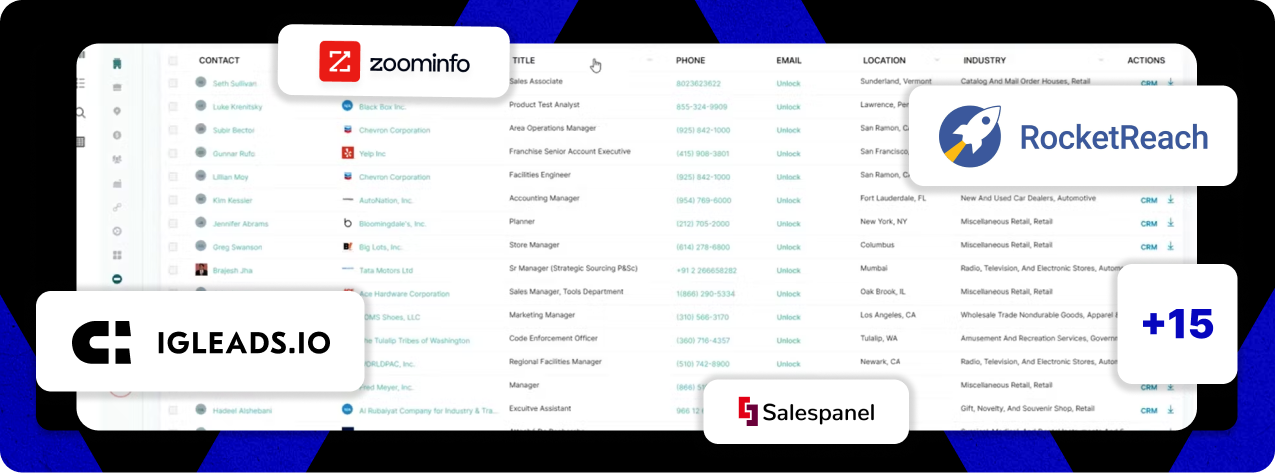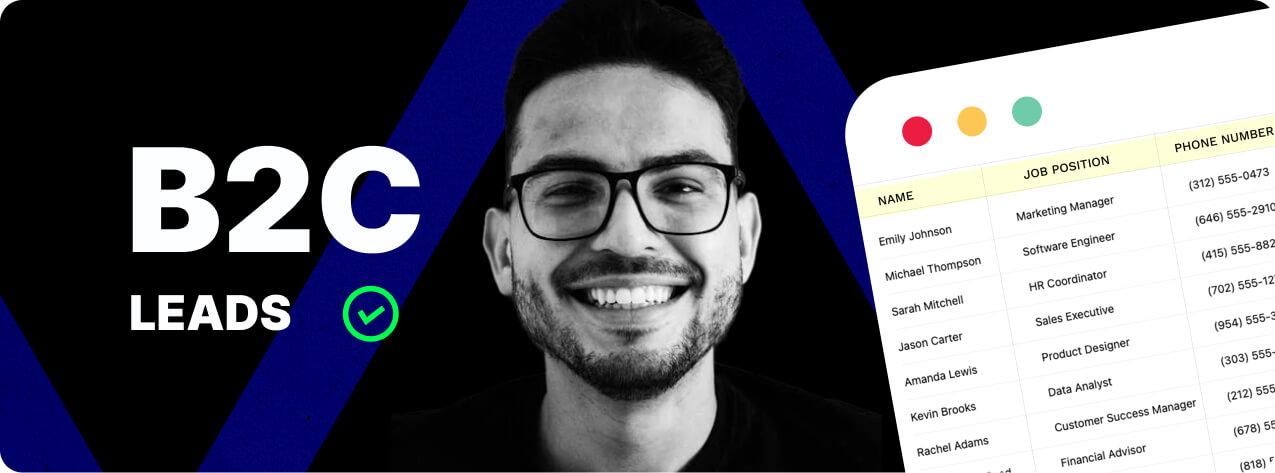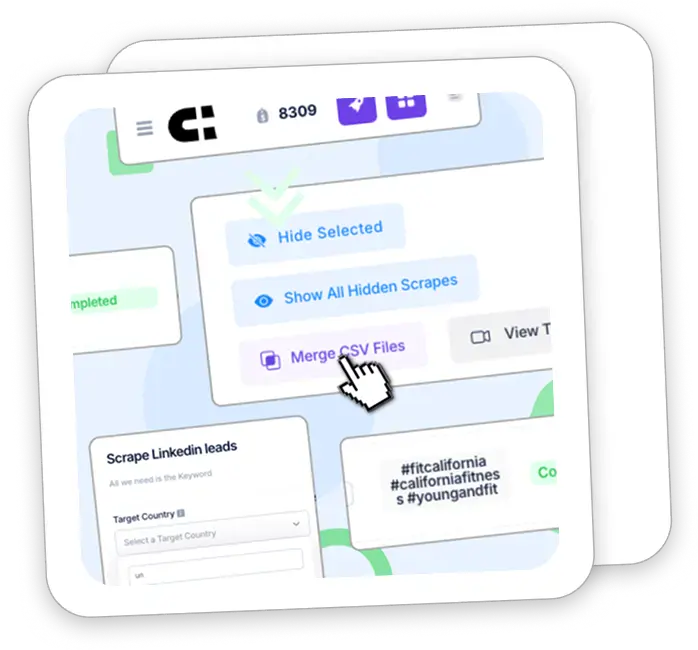Lead Sourcing | Strategies for Success
In today’s competitive business landscape, lead sourcing has become a vital strategy for companies looking to grow their customer base. This process involves finding potential clients who are genuinely interested in what a business offers. By focusing on contact acquisition and prospecting, companies can build a strong foundation for their sales efforts.
Lead sourcing goes beyond simple lead generation. It’s about gathering valuable information on potential customers, including their contact details and business specifics. This targeted approach helps businesses tailor their marketing and sales strategies more effectively.
With the right lead sourcing techniques, businesses can create a robust pipeline of qualified leads. These leads are more likely to convert into paying customers, boosting sales potential and driving growth. By mastering lead sourcing, companies can stay ahead of the competition and achieve long-term success.
Key Takeaways
- Lead sourcing focuses on finding interested potential clients
- It involves gathering relevant data on leads
- Lead sourcing differs from general lead generation
- Effective techniques create a strong pipeline of qualified leads
- Proper lead sourcing can maximize sales potential
- It helps tailor marketing and sales strategies
Understanding Lead Sourcing
Lead sourcing forms the backbone of successful sales and marketing strategies. It’s a targeted approach to finding potential customers, boosting productivity, and increasing conversion rates. Let’s dive into the core aspects of this crucial process.
Definition and Importance
Lead sourcing involves identifying and capturing potential customers for your business. It’s the first step in lead mining, setting the stage for effective sales strategies. By focusing on lead identification, companies can streamline their marketing efforts and allocate resources more efficiently.
Key Components of Lead Sourcing
Effective lead sourcing comprises several essential elements:
- Identifying potential customers through market research
- Gathering relevant data about prospects
- Qualifying leads for sales team engagement
- Utilizing lead capture tools to collect information
These components work together to create a comprehensive lead sourcing strategy.
How Lead Sourcing Differs from Lead Generation
While often confused, lead sourcing and lead generation are distinct processes. Lead sourcing focuses on finding and qualifying potential customers, while lead generation aims to attract and convert prospects into leads. Lead sourcing lays the groundwork for effective lead generation by providing a pool of qualified prospects to target.
“Effective lead sourcing is like mining for gold. You need to know where to look and have the right tools to extract value.”
By mastering lead sourcing, businesses can gain valuable market insights, refine their marketing strategies, and build stronger relationships with potential customers.
The Lead Sourcing Process
Lead sourcing is a structured approach to finding potential customers. The process involves several key steps that work together to create a robust lead discovery system. By following these steps, businesses can improve their lead gathering efforts and boost their overall sales performance.
The first step in lead sourcing is understanding your target market. This involves creating detailed customer personas that represent your ideal clients. These personas help guide your lead collection strategies and ensure you’re focusing on the right audience.
Next, focus on creating quality content tailored to your ideal customer. This content serves as a magnet for attracting potential leads and demonstrates your expertise in your field. It’s crucial to distribute this content across various channels to maximize its reach.
Identifying an effective omnichannel approach is the third step in the lead sourcing process. This means using a combination of online and offline methods to connect with potential customers. Some popular channels include:
- Social media platforms
- Email marketing
- Industry events
- Referral programs
Once you’ve laid the groundwork, it’s time to implement your lead sourcing strategy. This involves putting your plans into action and actively engaging with potential leads. During this phase, it’s important to monitor your performance and track key metrics.
Data collection is a critical component of the lead sourcing process. By gathering information on key performance indicators (KPIs), you can gain valuable insights into the effectiveness of your strategies. This data helps you make informed decisions and refine your approach over time.
The final step in the lead sourcing process is continuous evaluation and improvement. By analyzing your collected data and past campaign performance, you can identify areas for enhancement and make necessary adjustments to your strategy.
| Step | Action | Outcome |
|---|---|---|
| 1 | Create customer personas | Targeted lead discovery |
| 2 | Develop quality content | Attract potential leads |
| 3 | Implement omnichannel approach | Wider lead gathering net |
| 4 | Execute strategy | Active lead collection |
| 5 | Collect and analyze data | Performance insights |
| 6 | Evaluate and improve | Refined lead sourcing process |
Defining Your Target Audience
Effective lead sourcing starts with a deep understanding of your target audience. By defining who your ideal customers are, you can tailor your outreach efforts and maximize your results. Let’s explore the key steps in this crucial process.
Creating Buyer Personas
Buyer personas are fictional representations of your ideal customers. They help you visualize and understand your target market. To create accurate personas, gather data through surveys, interviews, and customer analytics. Include details like job titles, goals, challenges, and preferred communication channels.
Identifying Pain Points and Needs
Understanding your audience’s struggles is vital for effective lead sourcing. Conduct market research to uncover common pain points in your industry. Use this information to craft compelling messages that resonate with potential customers. Address their needs directly to show how your product or service can solve their problems.
Analyzing Demographics and Psychographics
Dive deep into your target market’s characteristics. Analyze demographic data like age, location, and income. Then, explore psychographic factors such as values, interests, and lifestyle. This comprehensive customer profiling helps you refine your lead sourcing strategies and connect with the right prospects.
| Demographics | Psychographics |
|---|---|
| Age range: 25-45 | Values sustainability |
| Urban professionals | Tech-savvy early adopters |
| Income: $75,000+ | Seeks work-life balance |
By thoroughly defining your target audience, you’ll improve your lead sourcing efforts and attract high-quality prospects. This foundation sets the stage for more targeted and effective outreach strategies.
Leveraging B2B List-Building Tools
B2B lead generation thrives on effective list-building tools. These powerful resources streamline contact acquisition, making lead mining more efficient. By harnessing the right tools, businesses can create targeted lists that align with their ideal customer profiles.
LinkedIn Sales Navigator stands out as a prime example. This platform allows users to search for and compile relevant lead lists based on specific criteria. By setting up precise search filters, companies can pinpoint potential clients who match their target audience perfectly.
Data accuracy is crucial in B2B lead generation. Tools like BookYourData offer verified contact information, saving time and resources. Regular updates and data cleansing ensure that lead lists remain current and valuable.
- Define your ideal customer profile
- Set up targeted search filters
- Use verified data tools for accuracy
- Regularly update and clean your data
Integrating lead lists with CRM systems is a game-changer. This integration allows for seamless import and tracking of outreach efforts. By maintaining a centralized database, businesses can monitor their B2B lead generation progress and adjust strategies as needed.
“The right list-building tools can transform your lead sourcing efforts from time-consuming to highly efficient.”
Remember, the key to successful contact acquisition lies in choosing tools that align with your specific business needs and consistently refining your approach based on results.
Effective Cold-Calling Techniques
Cold calling remains a powerful tool in lead generation. When done right, it can open doors to new opportunities and boost sales. Let’s explore some key strategies to make your cold calls more effective.
Crafting a Compelling Script
A well-crafted script is crucial for successful cold calling. It should be concise, engaging, and tailored to your prospect’s needs. Start with a strong opening that grabs attention and quickly explains the purpose of your call. Include key points about your product or service, but leave room for flexibility.
Active Listening and Building Rapport
Active listening is a vital sales technique. Pay close attention to what your prospect says and respond thoughtfully. This helps build rapport and trust. Ask open-ended questions to encourage conversation and gather valuable information about their needs and pain points.
Handling Objections
Objections are common in cold calling. Be prepared to address them calmly and confidently. Listen to the objection, acknowledge it, and respond with a solution or alternative perspective. Remember, objections often indicate interest and provide opportunities to further discuss your offering.
| Common Objections | Effective Responses |
|---|---|
| “I’m not interested” | “I understand. May I ask what solutions you’re currently using for [problem your product solves]?” |
| “It’s too expensive” | “I appreciate your concern. Let’s discuss the long-term value and ROI our solution provides.” |
| “We’re happy with our current provider” | “That’s great to hear. I’d love to learn more about what you like and see if we can offer any additional benefits.” |
By mastering these cold calling techniques, you can significantly improve your lead generation efforts and drive more sales. Remember, practice makes perfect in honing these skills.
Mastering Cold Email Strategies
Cold emailing is a powerful tool in lead sourcing and email marketing. When done right, it can open doors to valuable connections and business opportunities. The key lies in crafting personalized messages that resonate with your target audience.
To succeed in cold emailing, focus on creating compelling subject lines. Keep them brief and relevant to grab attention in crowded inboxes. Personalization is crucial – address recipients by name and reference specific details about their company or role.
Remember, the goal of cold emailing isn’t to make an immediate sale. Instead, aim to build authentic relationships and nurture leads over time. Provide value in every email by sharing insights, tips, or resources that address your recipient’s potential pain points.
“The best cold emails feel like they’re written just for you.”
To maximize your cold email success:
- Research your prospects thoroughly
- Craft a clear and concise message
- Follow up strategically
- Test different approaches and refine based on results
By mastering these cold email strategies, you’ll enhance your lead sourcing efforts and drive better results from your email marketing campaigns. With practice and persistence, cold emailing can become a valuable asset in your business growth toolkit.
Lead Sourcing
Lead sourcing is a crucial aspect of business growth. It involves finding potential customers through various channels. In today’s dynamic market, businesses need to explore both online and offline methods to maximize their reach.
Online Lead Sources
Digital lead generation has revolutionized how businesses connect with prospects. Social media platforms, email marketing campaigns, and content strategies are powerful tools. They allow companies to target specific audiences and track engagement metrics easily.
Traditional Lead Sources
Traditional lead sourcing methods remain effective for many industries. Networking events, trade shows, and referral programs create personal connections. These face-to-face interactions often lead to stronger, more lasting business relationships.
Balancing Digital and Traditional Approaches
An omnichannel approach combines the best of both worlds. It integrates digital and traditional lead sourcing strategies for a comprehensive outreach plan. This balanced method ensures businesses can reach prospects across various touchpoints, increasing chances of conversion.
- Analyze your target audience’s preferences
- Determine which channels they use most
- Align your sourcing efforts with their behavior
- Monitor and adjust your strategy regularly
By leveraging both digital lead generation and traditional lead sourcing techniques, businesses can create a robust pipeline of potential customers. The key is to remain flexible and adapt your approach based on your audience’s needs and market trends.
Social Media Prospecting and Community Growth
Social media marketing is a game-changer for lead sourcing. Platforms like LinkedIn, Twitter, and Facebook groups offer rich opportunities to find potential clients. By optimizing your profiles and joining industry-specific forums, you can tap into a vast network of prospects.
Effective community building on these platforms is key to success. Share valuable content, engage in meaningful discussions, and establish yourself as a thought leader in your field. This approach helps you attract leads organically and build lasting relationships with potential customers.
LinkedIn stands out for B2B lead generation. Its advanced search features let you pinpoint ideal prospects based on job titles, industries, and company sizes. Regular interactions and thoughtful content sharing on LinkedIn can significantly boost your lead sourcing efforts.
Remember, social media prospecting isn’t about quick wins. It’s about nurturing relationships and providing value over time. This patient approach to lead generation often yields higher-quality leads who are more likely to convert into loyal customers.
FAQ
What is lead sourcing?
Lead sourcing is the process of locating and gathering relevant data on potential customers (leads) who may be interested in a company’s products or services. It involves identifying, capturing, and qualifying leads for sales and marketing efforts.
How does lead sourcing differ from lead generation?
Lead sourcing focuses solely on discovering and gathering information about leads, while lead generation encompasses the entire process of attracting and converting prospects into leads.
What are the key components of lead sourcing?
The key components of lead sourcing include identifying potential customers, gathering relevant data, qualifying leads for sales team engagement, and continuously evaluating and improving the process based on data and performance.
Why is defining the target audience crucial for effective lead sourcing?
Defining the target audience is crucial because it helps create detailed buyer personas, understand their pain points and needs, and tailor outreach strategies to resonate with potential customers’ interests and motivations.
How can B2B list-building tools streamline lead sourcing efforts?
B2B list-building tools offer features to build accurate, targeted lead lists efficiently. They allow businesses to define their ideal customer profile, set up search filters, and integrate lead lists with CRM systems for easy import and tracking.
What are some effective cold-calling techniques for lead sourcing?
Effective cold-calling techniques include thorough research on prospects, crafting compelling call scripts addressing their pain points, active listening, building rapport, and handling objections effectively.
How can businesses master cold email strategies for lead sourcing?
Successful cold email strategies involve crafting compelling subject lines, personalizing emails, providing value and insights, and focusing on building authentic connections rather than directly pitching products.
What are the different sources for lead sourcing?
Lead sourcing encompasses both online sources (social media, email marketing, SEO, webinars, content marketing) and traditional sources (networking events, referrals, word-of-mouth, print advertising).
How can social media prospecting and community growth contribute to lead sourcing?
Social media prospecting and community growth involve leveraging platforms like LinkedIn, Twitter, Facebook groups, and industry-specific forums to identify potential leads, engage in relevant discussions, share valuable content, and build relationships.
Explore more lead generation strategies and tools
- B2B Lead Generation Solutions – Guide for 2025
- How to Build a High-Quality B2B Email List for Outbound Marketing
- Buy Email Lists for Marketing in 2025: Complete Guide to Business Leads
- Why Scrape Google Maps? Use Cases for Sales, Marketing & SEO
- B2C Lead Generation: The 2025 Playbook
- 15 Best Lead Generation Companies for 2025
- Best B2B email list providers in 2025
- Top Lead Generation Agencies Compared (2025)
- 18 Best B2B Lead Generation softwares in 2025
- Lead Generation Guide: Strategies & Tools for 2025
Source Links
- Lead Sourcing: Tips, Tools, and Strategies – UpLead – https://www.uplead.com/lead-sourcing/
- Lead Sourcing Strategies, Tips, and Tools You Need To Know – https://www.bookyourdata.com/blog/lead-sourcing-tips
- What Is Lead Sourcing? Expert Tips, Tools, and Strategies [2024] – https://getwpfunnels.com/lead-sourcing/



